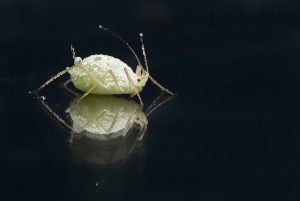The third of the ten plagues brought upon the Egyptians was the plague of lice.
Pharoah once again summoned his necromancers to remove the plague, but this time they were unsuccessful. The reason given is that the lice, being smaller than the size of a barley cornel, were too small for the powers of necromancy to affect them [1].
But we have been taught that even though there were many types of lice, the smallest was no smaller than a chicken egg! [2] If so, the question returns as to how comes the necromancers did not succeed to get rid of the lice? [3]
R’ Yom Tov hakohen Kahan was well known for his exceptional hospitality. The local custom in Pressburg was that the visitors and poor would wait at the back of the synagogue after the services and the locals would choose who they would host. R’ Yom Tov would always be the last to exit, extending his hospitality to anyone who was left, including, as was most often the case, the poor guests, unkempt and lice ridden. But none of this bothered him, related his son Avraham, and he would treat his guests no less than royalty.
But all that changed when the Nazis invaded. Yom Tov was imprisoned in various camps until he was finally liberated from the infamous Matthausen. Throughout his time in the camps everyone suffered from lice, including all of his immediate neighbours… everyone except for him! He believed that this miraculous phenomenon was tit-for-tat in the merit of his hospitality achieved by looking beyond the lice of his poor guests.
Just like our more modern-day anti-Semites, may their names and memories be obliterated, the Egyptians saw the Jews as ‘lice’.
But ‘kinim’ (lice) can also be read ‘keinim’ indicating truth, positivity and correctness [4].
The letters making up the word ‘emes’ (truth) each have two ‘feet’, whereas ‘sheker’ (falsehood) is made of a letter with only a single ‘foot’ – and so we have been taught that truth stands, i.e. prevails whereas falsehood does not [5]. Even temporary credibility of falsehood must be based on some connection to the truth. For example if a person were to claim that he travelled to the moon, being that such a feat is theoretically possible it might be believed until proven otherwise. But if he were to claim that he was a banana his claim would have no credibility whatsoever!
The Egyptians failed to recognise the ‘keinim’ (truth) of the Jews and instead treated them like kinim (lice). And so they were punished with a plague of lice that they would not be able to get rid of (even the big ones)!
And so ultimately, tit-for-tat, the Egyptians would eventually fall and the Jewish people, so long as we see the good in our fellow Jews, will prevail.
Have a very lice Shabbos,
Dan.
Additional sources:
Story: Achas Sha’alti, R’ Yitzchok Zilberstein
[1] Rashi, Shemos 8:14 (Sanhedrin 67b)
[2] Yalkut Shimoni, Shemos 182; Tanna d’bei Eliyahu 7; Meam Loez
[3] Perhaps the lice were initially smaller than a barley cornel, but only later became bigger: either because of the Egyptian blood that they consumed, or (as a type of punishment) because the Egyptians mistreated them (similar to the plague of frogs [see Rashi, Shemos 8:2]).
[4] E.g. see Bereishis, ch. 42
[5] Yalkut Shimoni, Bereishis 1:3
